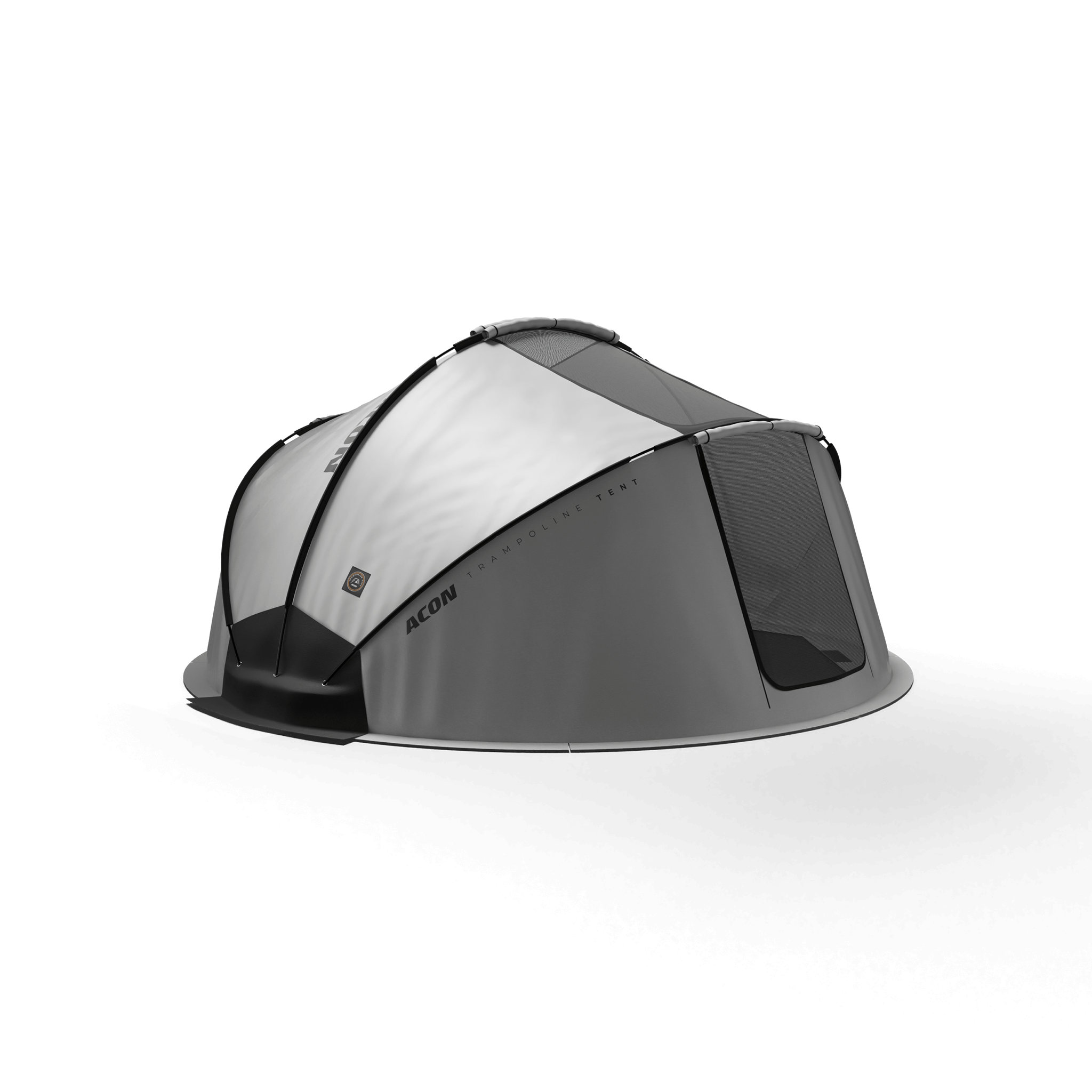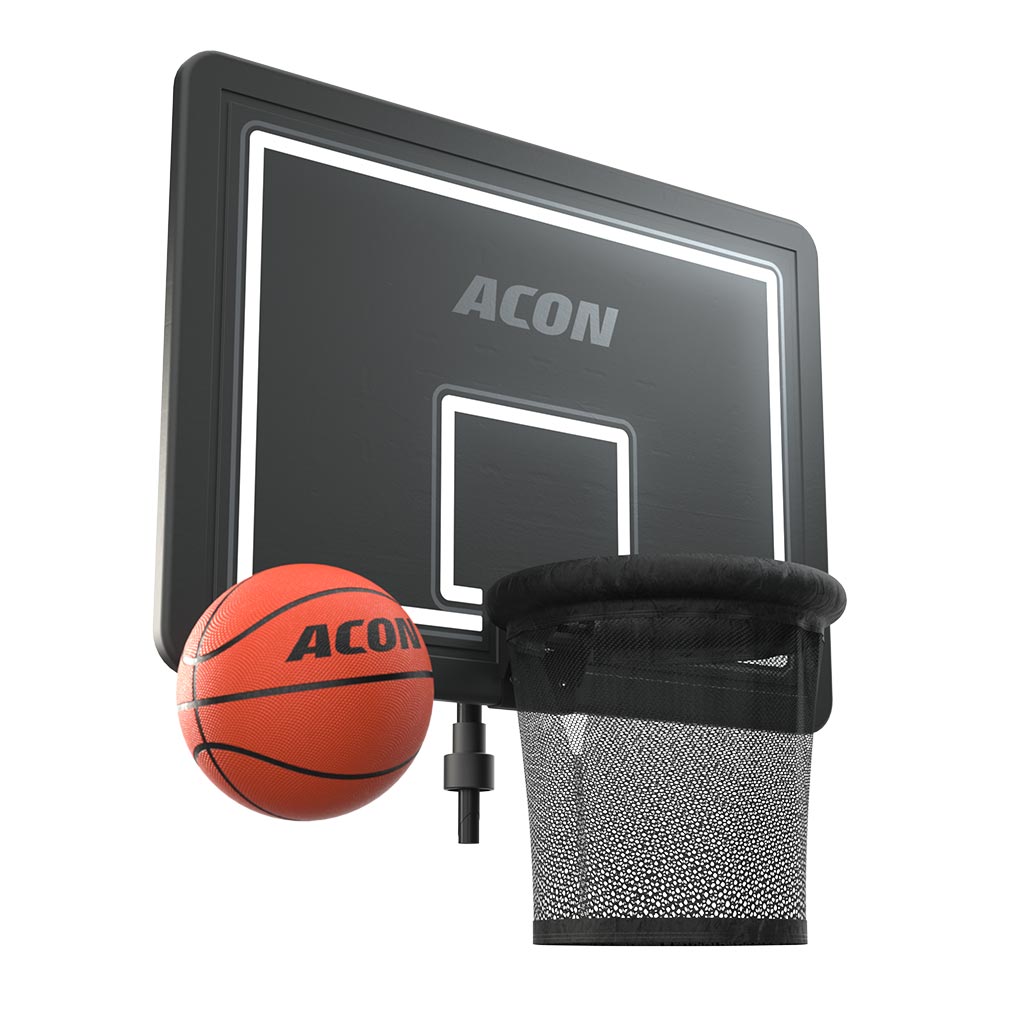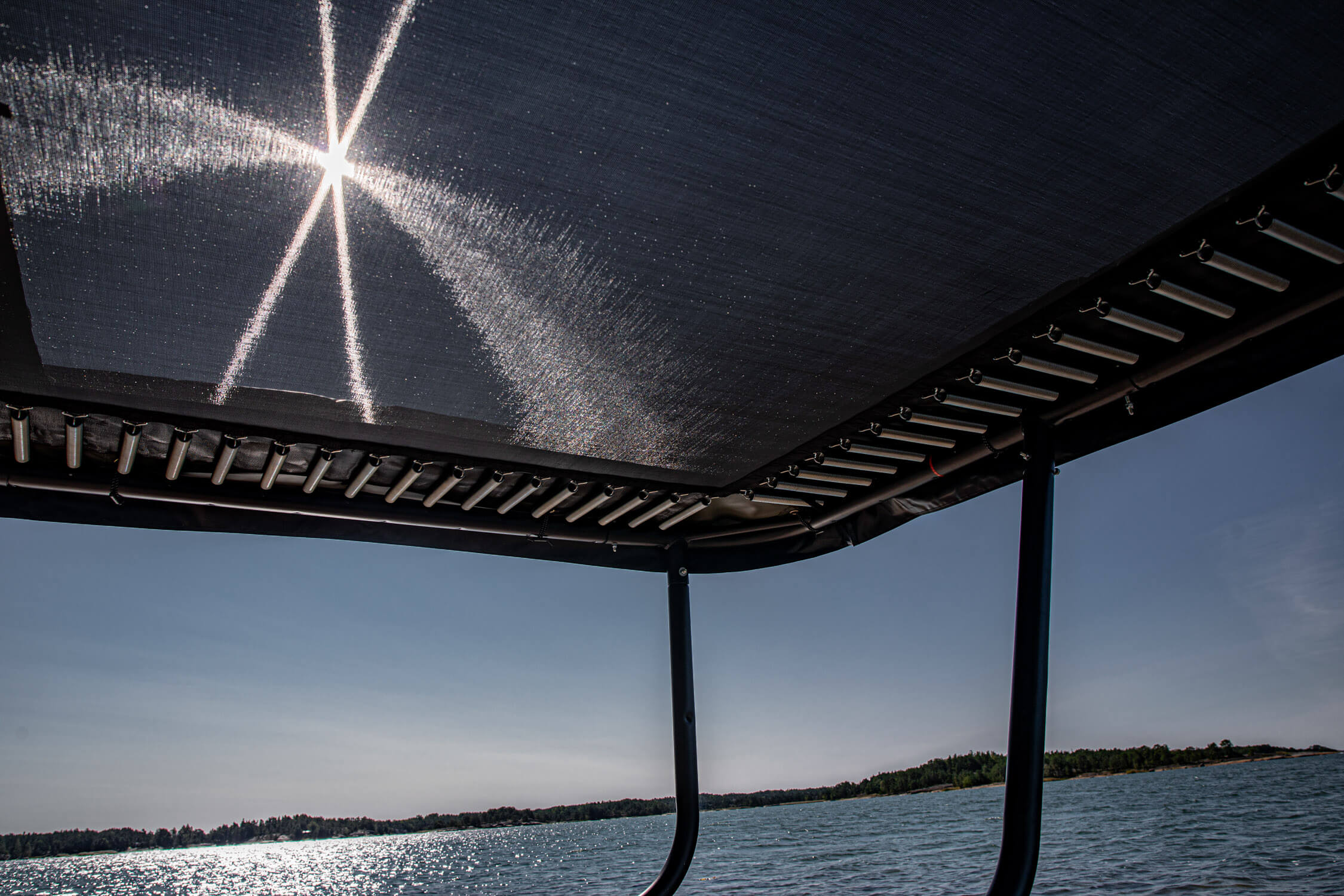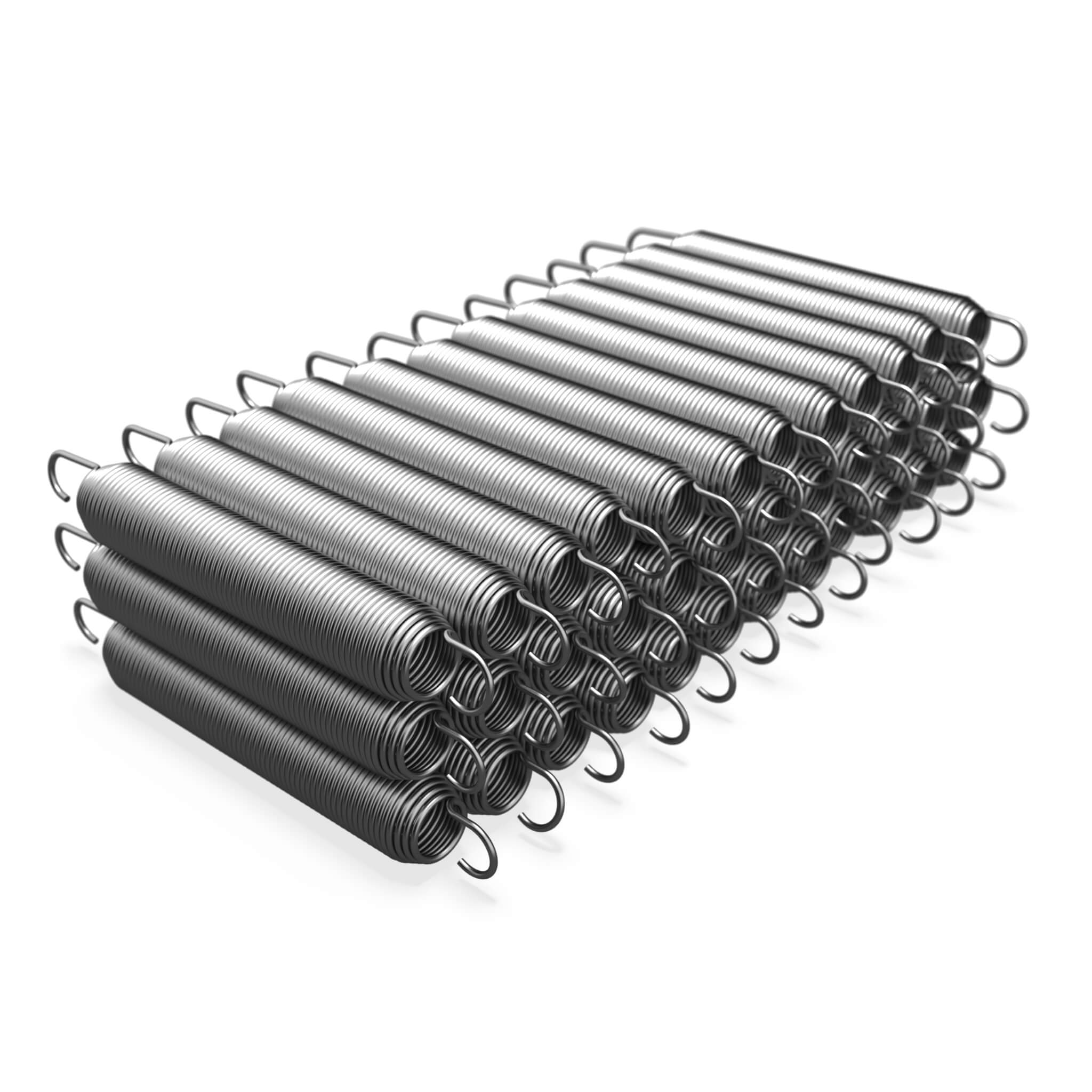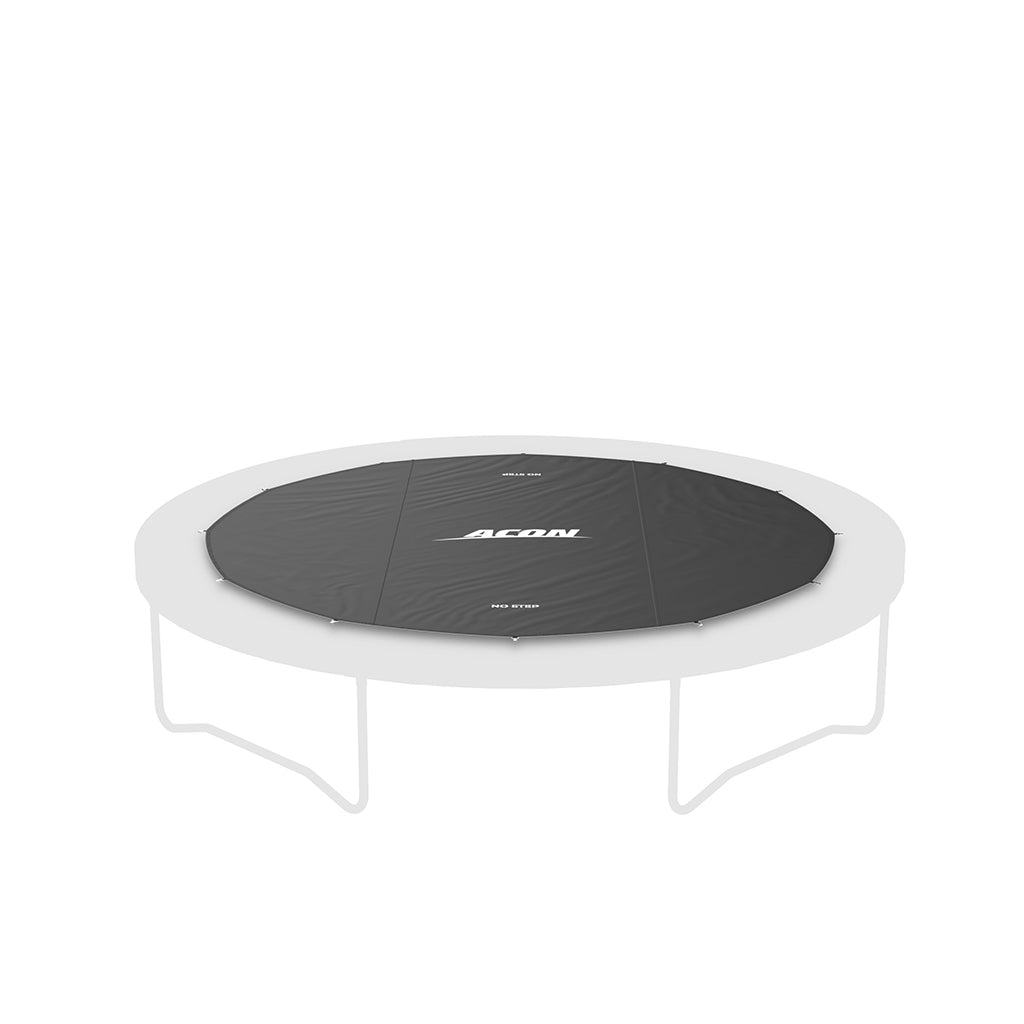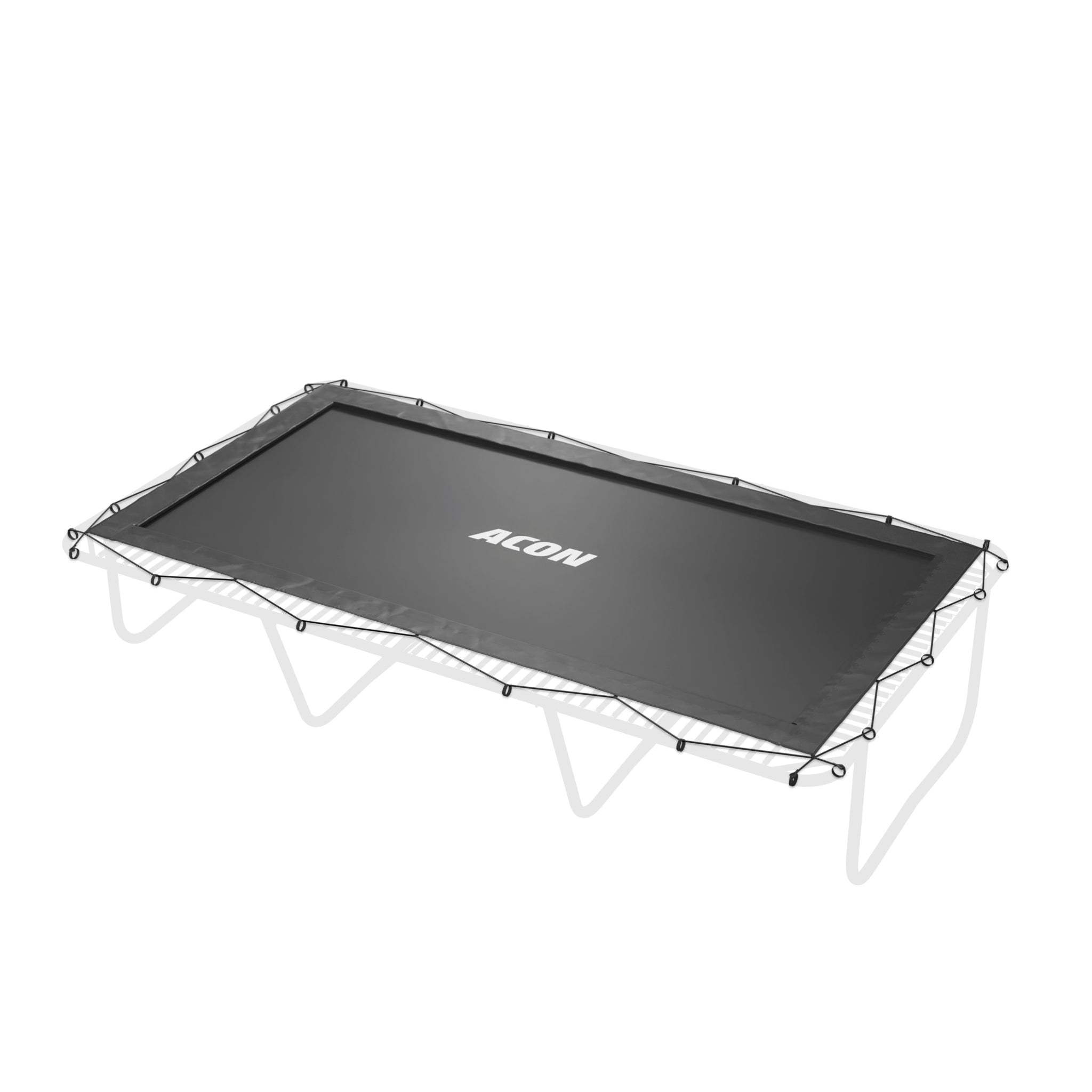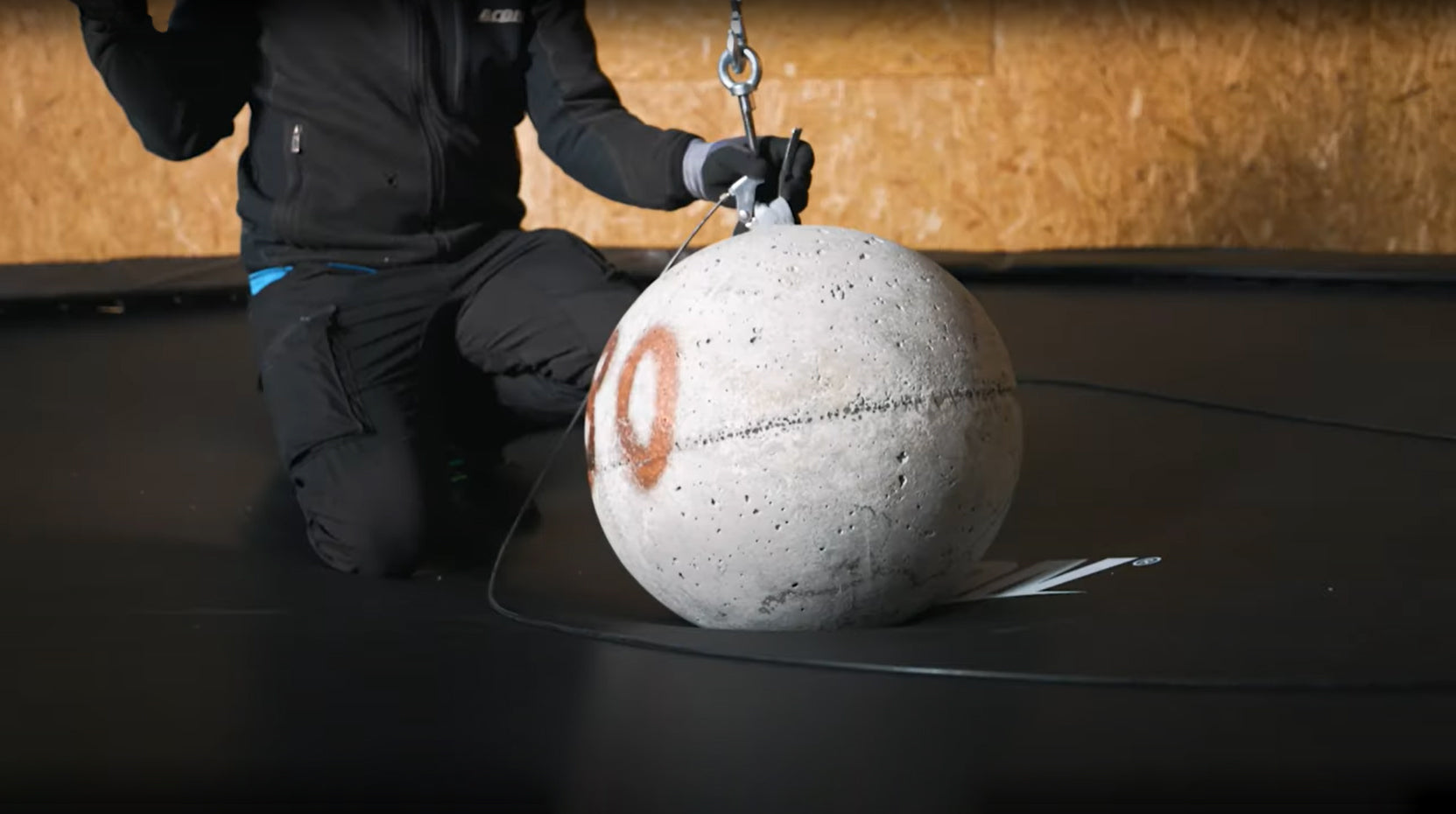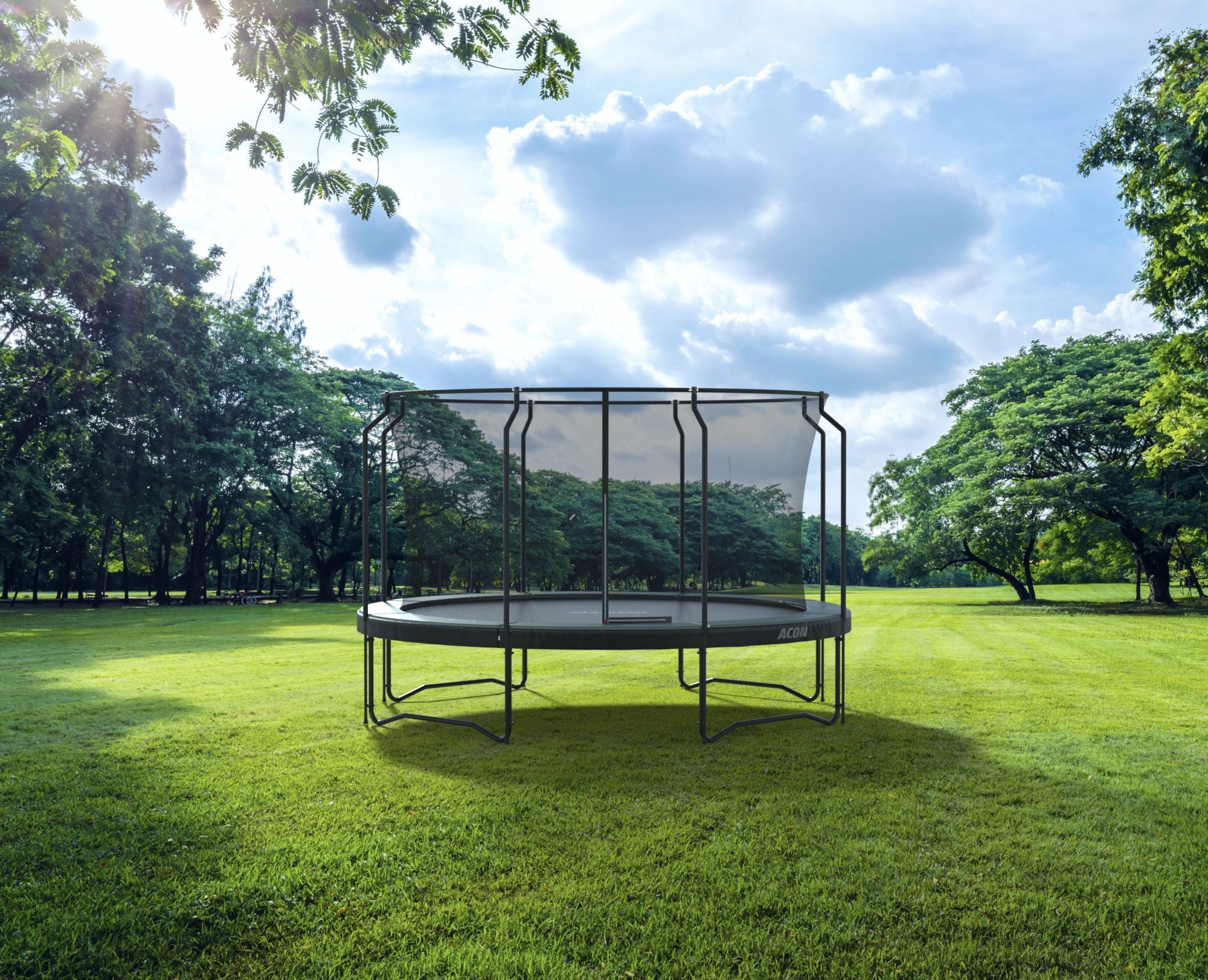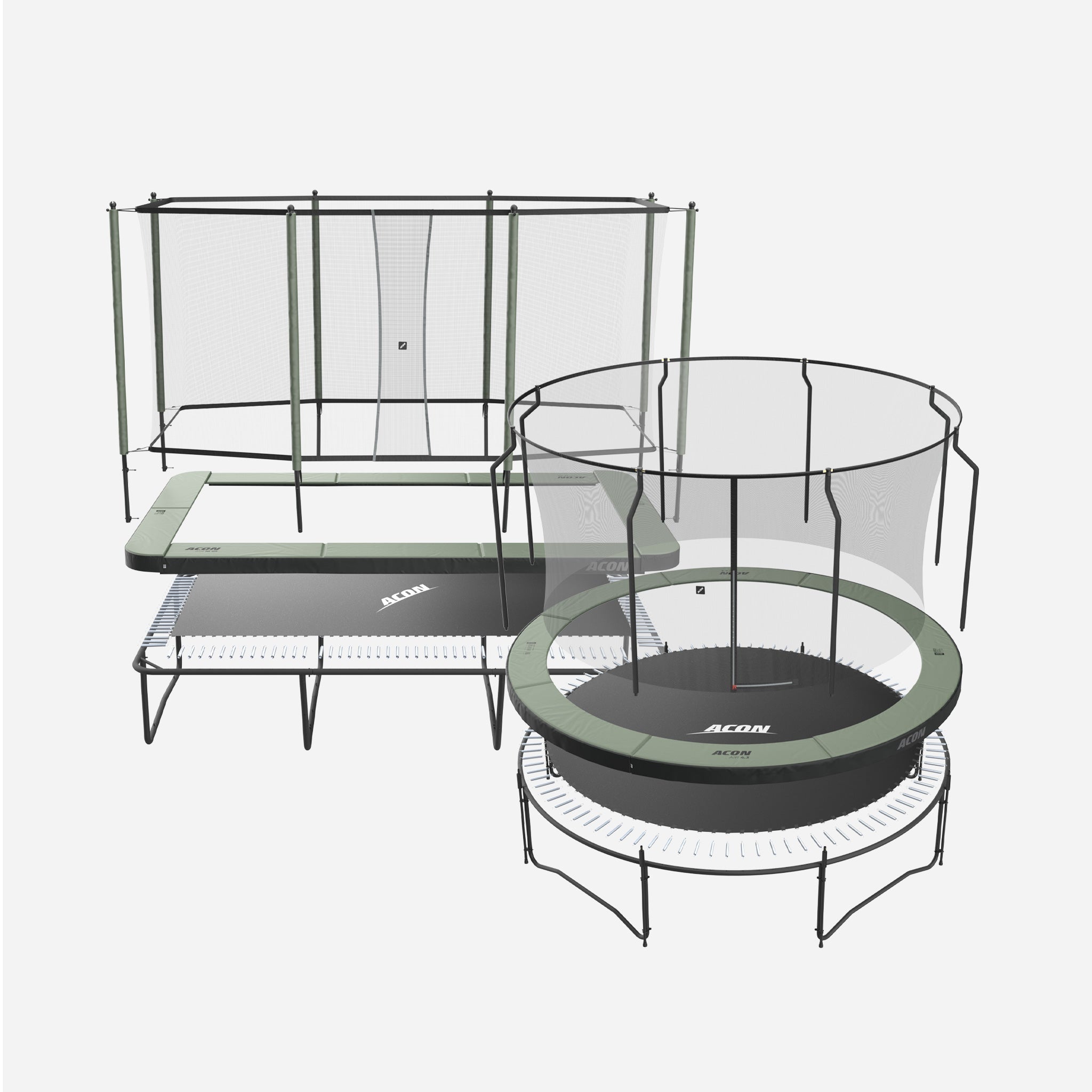Distributacon Inc.
1250 Wayzata Blvd E Unit 1127,
Wayzata, MN 55391, USA
While there is no one-size-fits-all answer to this question, there are general guidelines for each part of the trampoline that depend on the materials, their level of quality, and the commitment to proper care and maintenance of the trampoline itself that takes place.
When premium quality products, as well as good maintenance and care go hand in hand, you can get the most longevity possible from your trampoline. Depending on the brand, this can be anywhere from 3 – 8 years, however with an Acon trampoline our commitment to sustainably built products means we make trampolines that last a lifetime.
Let’s take a look at the factors that contribute to the average lifespan of a trampoline, the actions you can take to improve it, and how to choose a trampoline with the most promising life expectancy so you and your little ones can jump to your heart’s content for as long as possible, with no interruptions.
What is The Average Lifespan of a Trampoline?
The average lifespan of a trampoline will vary depending on the brand, the conditions of storage, its exposure to weather and whether the trampoline is an indoor or outdoor piece of equipment. The materials used for each part of the trampoline each contribute to the health of the trampoline overall, and care needs to be taken with all the parts to ensure the average lifespan.
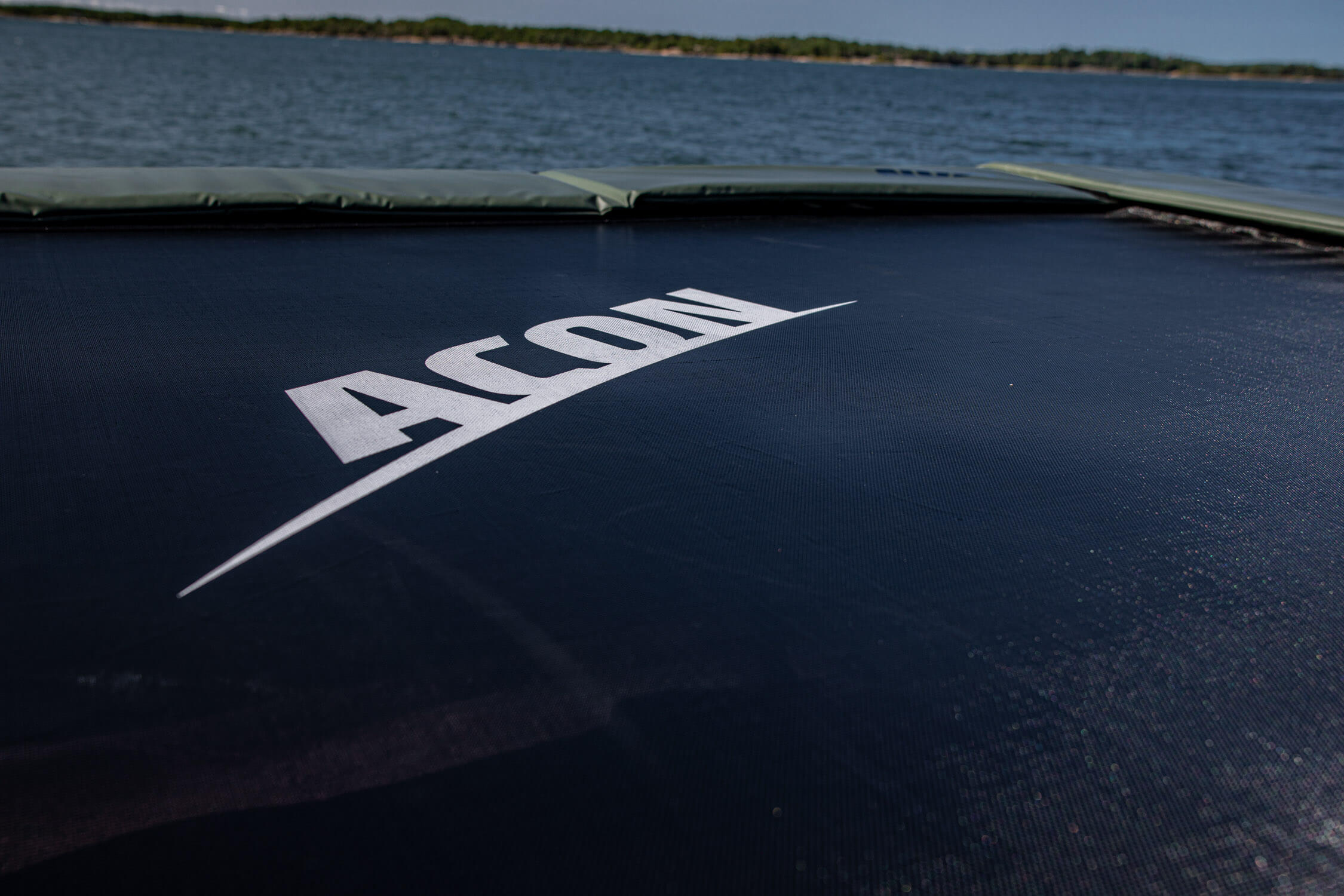
Trampoline Mat
The trampoline jumping mat, together with the springs, takes the heaviest hit from all the jumping on your trampoline. Depending on how you use the trampoline, it’s either springs or mat that will suffer from general wear and tear first. It’s not just the jumping that takes a toll on the mat. If the mat hasn't been treated properly against UV, weather conditions like the light from the sun’s UV rays, or persistent inclement weather can have a negative effect on the mat.
The mat material also plays a large part in the longevity of the mat itself. Polypropylene is a quality material that helps you to get the most from your jump mat. Acon trampoline mats are made from this wonder-material, as well as being cross-sewn and UV-treated so they’re less likely to suffer from wear and tear, if maintained properly. You can also protect the mat from weather conditions with a weather cover to add extra life to it.
Trampoline Frame
The trampoline frame is the metal part of the trampoline that holds it all together. The most durable part of the trampoline, it gives the trampoline its structure. It’s vital the frame is strong for you to get the most out of your trampoline. Held together by screws and stronger than the other parts of the trampoline, the weather also plays a role in frame longevity.
Acon’s frames are made from galvanized steel, inside and out, and coated in black powder to prevent rust. Galvanized steel is corrosive-resistant and made to withstand adverse weather conditions. Our frames are also known for their heavy-duty structure that keeps the frame in place during jumping while also in heavy wind conditions. This cannot be said about lighter frames often found in cheaper trampolines.
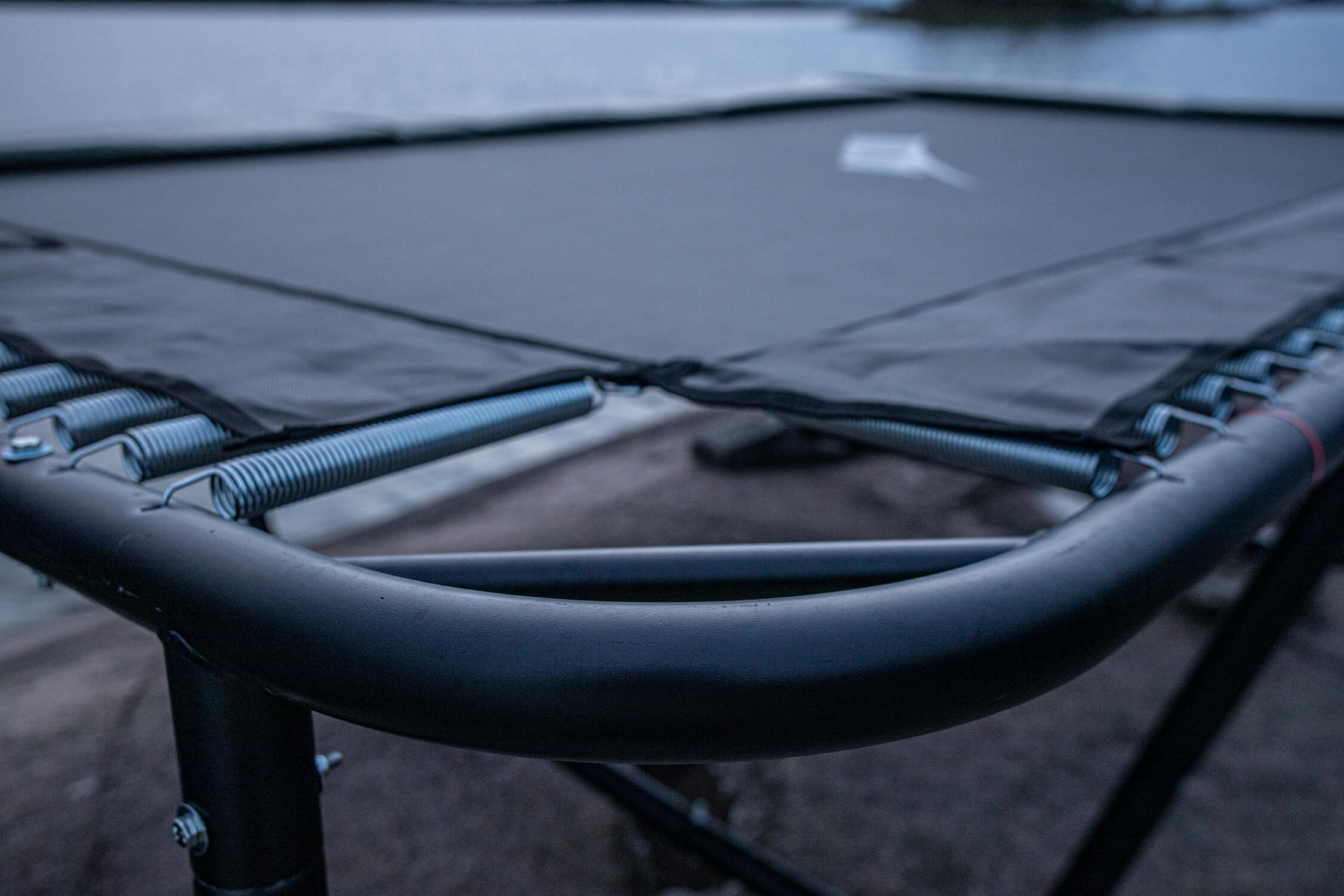
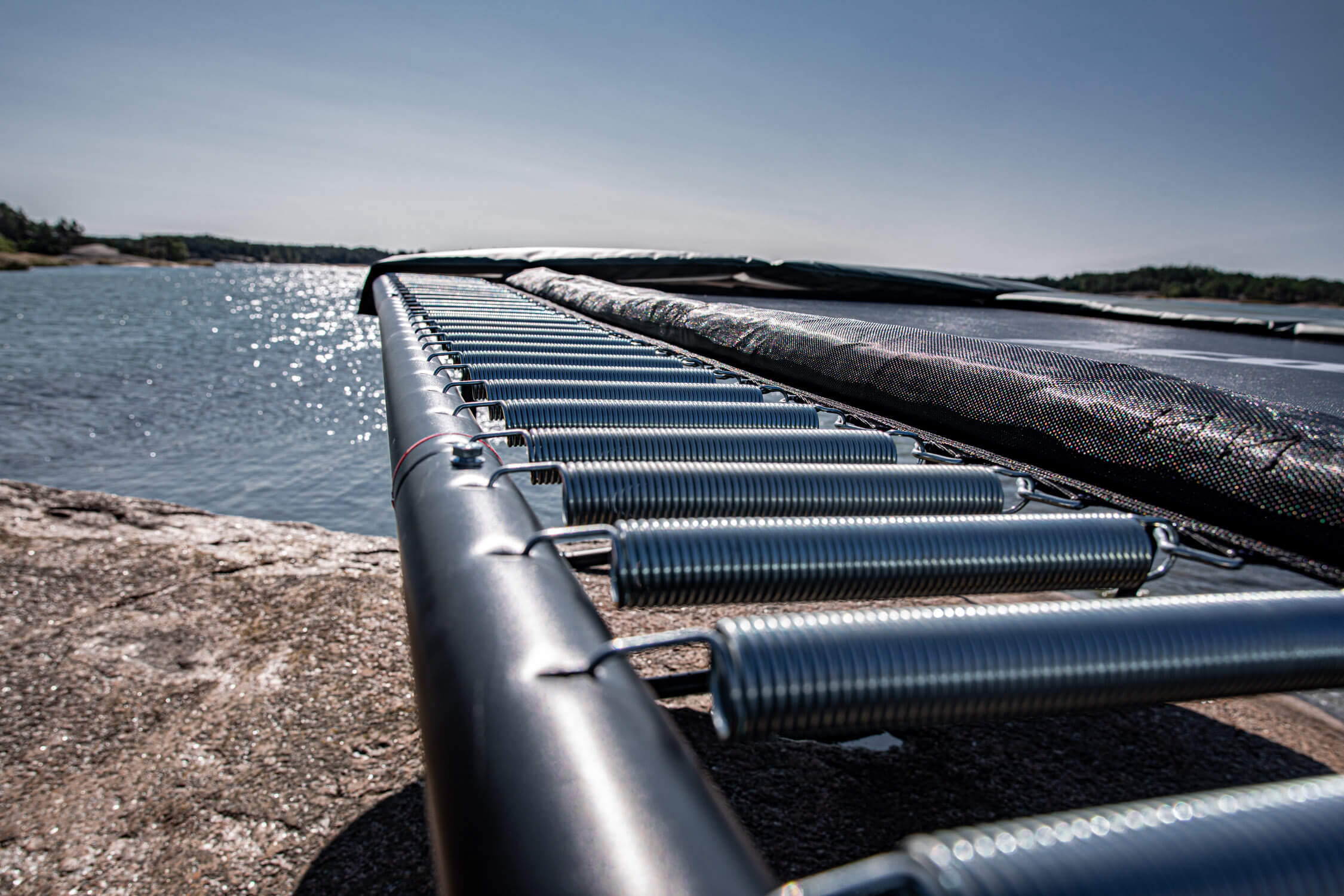
Trampoline Springs
As said, trampoline springs go through the most wear and tear on the trampoline together with the mat. Each time you jump, the spring is stretched so over time the friction caused to the spring by jumping can wear out the, well, springiness!
Even quality steel can lose elasticity with the repeated extension and compression that occurs with jumping, over time, and repeated action. Replacing springs is not difficult, and the replacements are easy to come by. Our springs are made from strong, galvanized steel so the springs last to give you the best, prolonged bounce for as long as possible.
Trampoline Safety Net and Poles
The safety net helps to keep jumpers on the trampoline while the poles support the safety net. The lifespan of the poles varies greatly; at Acon, we make them last for years and decades to come. However, in cheaper models, poles that hold the netting in place generally last for 1 - 3 years.
If a trampoline brand measures up to the CE/ASTM standards, they will likely recommend renewing the safety net every 3 years due to the safety regulations of the standards given. Complying by the standards, ACON strongly suggests renewing the net according to standards.
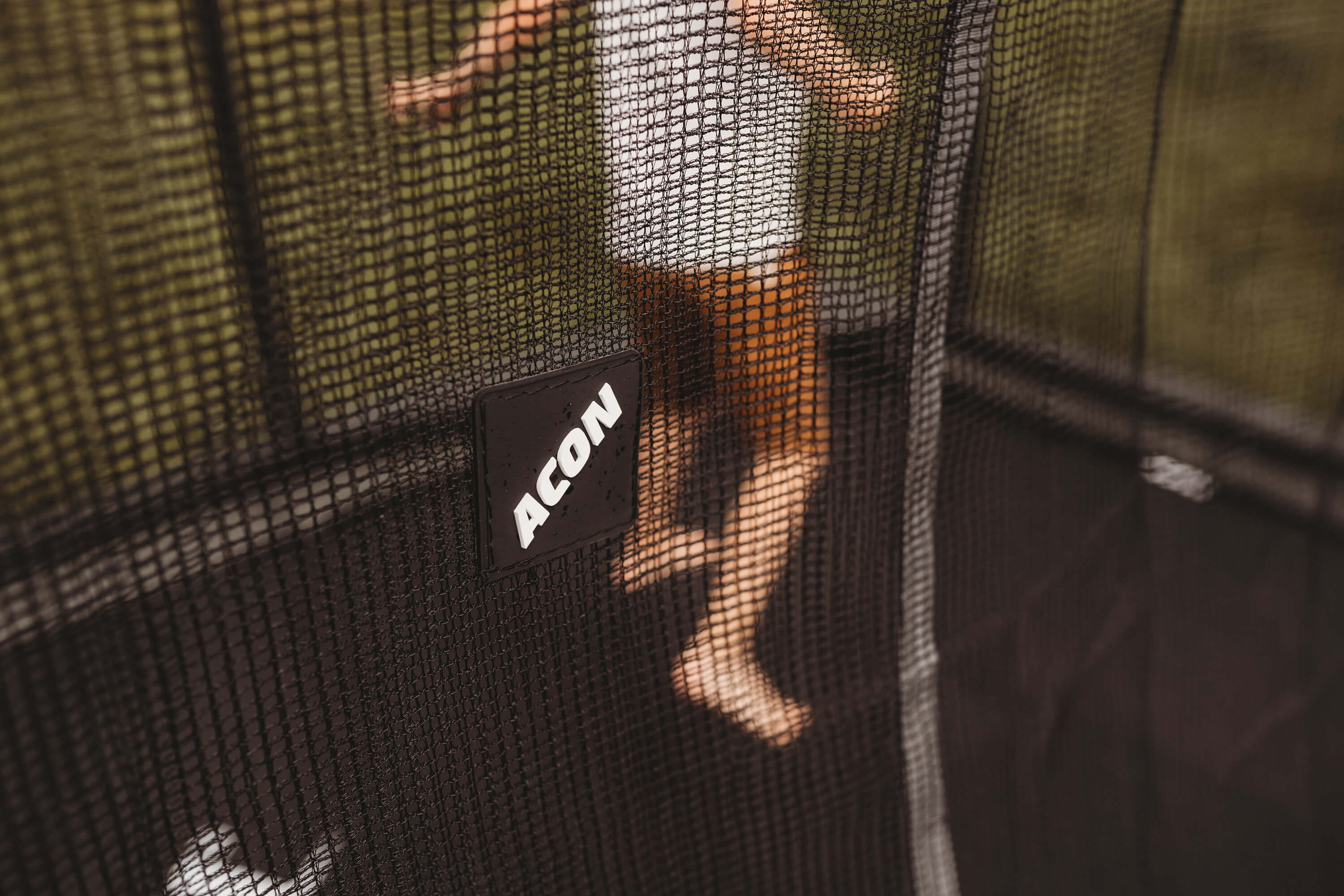
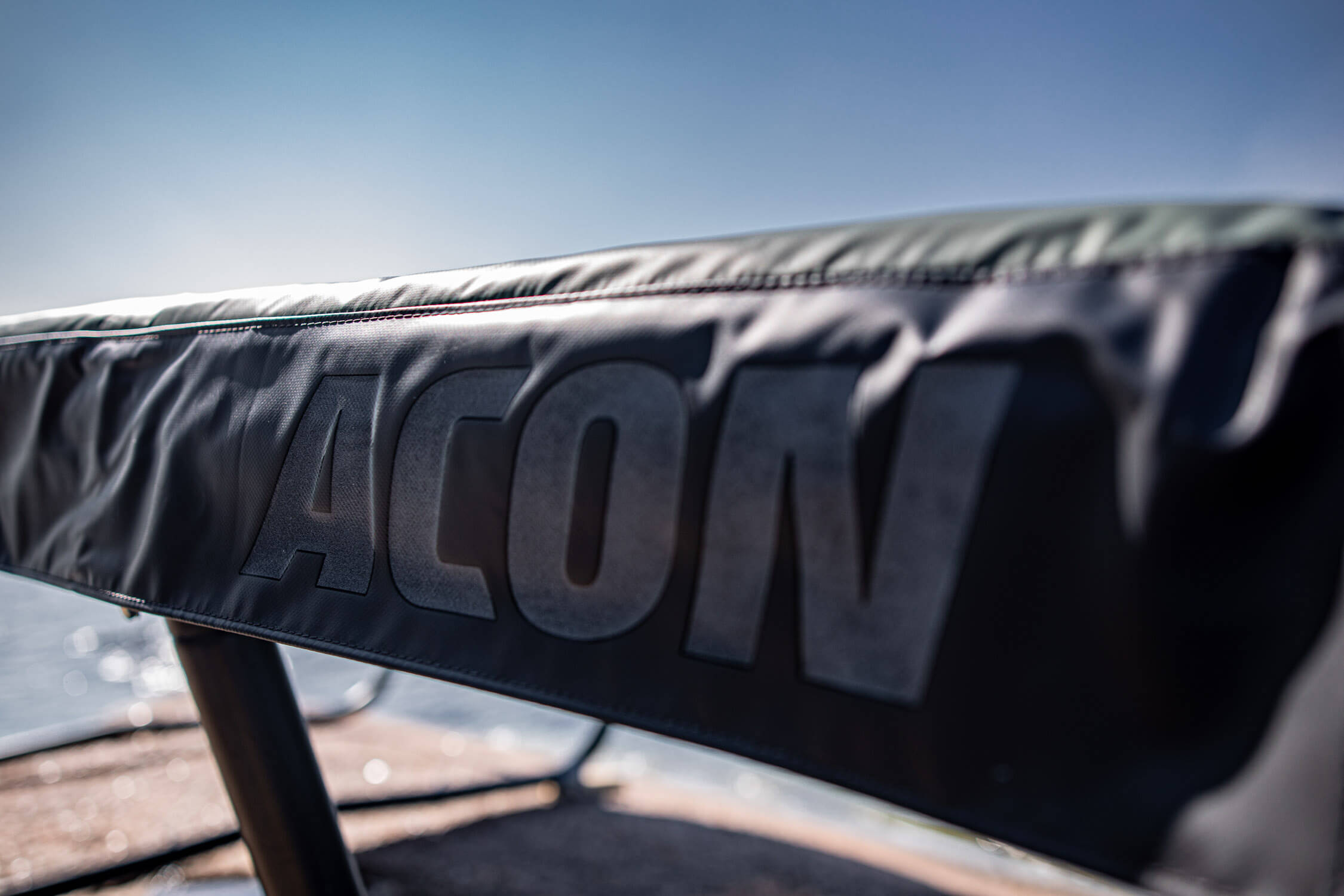
Trampoline Pads for Poles and Springs
Pole padding reduces the risk of jumpers bouncing on the poles and hurting themselves.
Acon’s safety pads that cover the springs are made of durable, thick foam covered by strong, UV and water-resistant PVC. This means the pad can be used all year round.
The average lifespan for Trampoline Parts
For a large, outdoor trampoline, the general average lifespan is generally between 3 – 8 years. Depending on the manufacturer, the average lifespan for the mat is 1-5 years, for frame 3-8 years and for springs 3-4 years.
In comparison, Acon’s trampolines are built to last a lifetime. We make our trampolines so that they can be handed down from one generation to the next, as part of our commitment to the value of sustainability.
How to Increase the Lifespan of the Trampoline?
One of the best and easiest ways to assure yourself the longest possible lifespan for your trampoline is to choose a premium quality product. Although the upfront investment may be bigger, it will save time and money in the long-run on spent on cheaper materials, as they do not age well. When materials rust or succumb more easily to general wear and tear, replacements and good care might not be enough to save the trampoline in the medium term. By purchasing a high-quality trampoline, you are saving yourself from needing to buy a new trampoline every couple of years.
Equally, when you purchase your outdoor trampolines, make sure to check the manufacturers guidelines about spare parts and recommended regular maintenance, to stay on top of things. Verify the proper care required to look after your kids trampoline and you’ll see the benefits in your trampoline’s longevity. Acon offers a 100% spare part guarantee so you can spruce up your trampoline whenever you need over time.
Trampoline Review: How to Choose for Longevity
What to look out for when you’re choosing your trampoline? There are a few pointers that will help you to narrow down your search. Some of these provide clues about the longevity of the trampoline you’re considering purchasing. For example, by checking the warranties provided by manufacturers, you can gauge the expected lifecycle of the trampoline parts. If no warranty is offered, this shows that the expected lifespan is not long. The longer the warranty, the more confidence the supplier has that the trampoline will last for a greater amount of time.
Trampoline reviews are another way to check in, although this takes some time and research on your behalf. Fellow customers often provide the kind of insight that’s worth reading, and the frequency of bad or mediocre reviews will speak volumes about the quality of the trampoline on offer. Real-life comments may describe the kind of issues with rust or wear and tear that speak to a trampoline that hasn’t been built for longevity.
The Best Way to Treat Your Trampoline
To get the best results from your trampoline, there are some responsibilities to be followed. Adhere to the guidelines set by the trampoline manufacturer when it comes to weight limits so that the mat doesn’t begin to sag. Don’t allow sharp items on the trampoline, as tears could follow. Keep an eye on weather conditions that are potentially harmful over the long-term and use covers. When it comes to Acon trampolines, you can leave the frame outdoors even in winter. We recommend taking off the mat, springs, and net for winter storage if the trampoline is not in use. If the trampoline is in use, sweep the snow off the mat on a regular basis.
Keep the mat clean and inspect it for any little tears or holes. If the trampoline seems shaky when being jumped on – check the screws and bolts. Keep your trampoline out of harm’s way from elements like fire from grills or firepits, that can potentially cause damage.
A Little TLC Goes a Long Way
To get the most from your trampoline and to keep it bouncing way beyond its projected lifespan, you need to show it some TLC.
Small acts of maintenance will build up and pay off over time. One of the first things you should remember is to check up on the screws and bolts, to make sure they’re not loose and to tighten them if they’ve become loose over time. This helps to keep weight distribution across the trampoline even, so damage doesn’t occur by slow damage to the frame.
Trampoline springs are so important. Check your springs regularly for any rust or refraction that could impact the bounciness of your trampoline. Don’t waste time replacing damaged or worn springs.
Clean your trampoline mat when necessary and use the time to inspect the trampoline parts for any damage or signs of wearing away. If you’re new to trampoline TLC and not sure where to begin, look no further than our ultimate guide on trampoline care.
Tips for Sustaining Your Trampoline
Respect the weight limits to avoid overstressing the trampoline mat and springs.
Keep the mat clean to prevent early wear and tear. Clean regularly or when you start to see dirt or debris accumulate.
Check your springs regularly to make note of any rust or refraction that may require maintenance or replacement.
Tighten loose screws and bolts to prevent the frame from becoming unstable.
Use a weather cover to protect your trampoline from the elements. This is especially important for those built without parts that have UV protection or water-resistance.
Store parts during winter if the trampoline is not in use. Remove the mat, springs, and net during the offseason.
By following these simple tips you can make sure that the trampoline is in prime condition for the next use and for years to come. Choosing a high quality product not only reduces the need for maintenance, but also ensures a safe and longer-lasting experience.
How Long Do Acon Trampolines Last?
Unlike other trampolines on the market, Acon trampolines are designed to last significantly longer than the typical 3-8 year trampoline lifespan. Built with high-quality materials and innovative engineering, you will enjoy using them for much longer, even decades.
Galvanized Steel Frame: The frame is made from heavy-duty, galvanized steel that is resistant to rust and corrosion. This ensures the frame remains sturdy and functional through varying weather conditions and high-impact use without degrading.
UV-Treated Mat: Acon’s trampoline mats are made from UV-treated polypropylene, withstanding prolonged exposure to the sun without losing strength or elasticity. Compared to standard trampoline mats, they are durable against tearing and fading.
High-Quality Springs: The galvanized steel springs in Acon trampolines are designed for superior longevity. In contrast to rival products, these springs retain their elasticity for longer, reducing the need for replacement. A consistent bounce for extended periods ensures a better experience of using the trampoline for years to come.
Replaceable Parts: Making good use of your trampoline will eventually result in the need for replacing some parts. Luckily, Acon offers a 100% spare part guarantee, so that worn-out components, like springs, nets or padding can be easily replaced. This is required less often than in the case of a typical trampoline, thanks to Acon’s quality materials. So you can focus less on spending time and money on replacing parts, and more on enjoying the trampoline itself.
Summary on Trampoline and its Lifespan
Trampolines last best when they’re made of high-quality parts, built to withstand the elements and your kid’s bounciest days. Matched with regular check-ins and a little trampoline TLC maintenance, your Acon trampoline sets you up for a lifetime of longer leaping!
How many years can a trampoline last?
Trampolines generally last from 3 -8 years depending on the brand and quality, but high-quality trampolines - such as Acon’s - last for decades.
Do trampolines need maintenance?
Weather, jumping and general wear and tear all take a toll on your trampoline. To get the longest life from your trampoline, regular maintenance to examine the trampoline for damage, protection from less-than ideal weather and replacing parts as and when needed are all ways to help maintain your trampoline so you can get the longest amount of time from it.
Do trampoline springs wear out?
Trampoline springs can wear out over time due to repeated jumping action, as each time you jump, the spring is being stretched. The best springs are made from g steel, as they are thicker and therefore last longer. However, make sure to check that your manufacturer provides springs as trampoline spare parts before purchasing a trampoline – just in case they need TLC.alvanized
How do you know if your trampoline is bad and needs care?
Visual cues like rust, rips or tears are a good indication that your trampoline is in need of TLC, whether it’s a sprucing up of particular parts or a full replacement.
How long do trampolines last?
In general, the trampoline lifespan is about 3 to 8 years. The exact duration of use depends on the quality of materials, build, maintenance and proper trampoline storage. Galvanized steel frame and UV-resistant mats increase the price tag upon purchase, but are cost-effective in the long-run. Cleaning, tightening bolts and other regular maintenance extend the trampoline’s lifespan.


